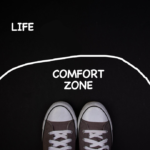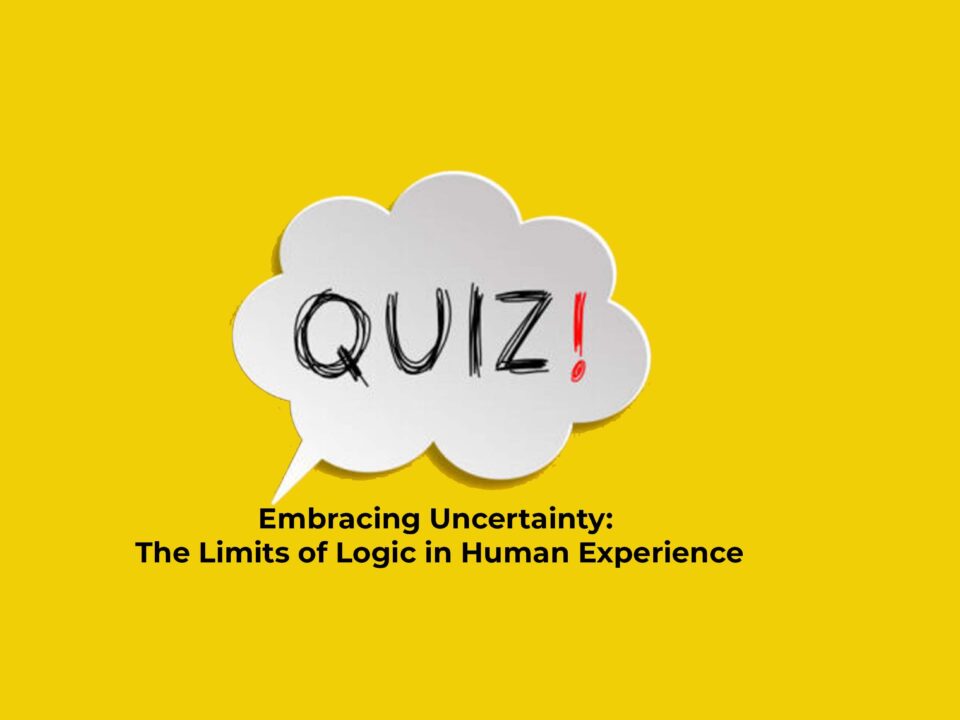
Life Begins After Your Comfort Zone: Embracing Change for Growth
February 9, 2024
The Courage to Enter: How Your Greatest Fears Hide Your Greatest Rewards
February 9, 2024Introduction: The Quest for Certainty
In a world that prizes certainty and factual knowledge, the human tendency to lean on logic as the primary tool for navigating life’s complexities is hardly surprising. Yet, this reliance on reason often leaves us ill-equipped to manage life’s uncertainties. This exploration invites readers to consider the limits of logic in human experience and the transformative potential of embracing uncertainty.
Albert Einstein said, “Logic will get you from A to B. Imagination will take you everywhere”. As humans,
- We are called to imagination.
- We are called to call forth the things that are not as though they were (Romans 4:17)!
- We are called to faith (the substance of things hoped yet not seen! ~ Hebrews 11:1
Here is the catch: You don’t have to be great to start, but you must start to be great! ~ Zig Ziglar. It can, therefore, be deduced that for you to master a thing, the start is necessary, the process is necessary, and the price is necessary.
The Nature of Logic
Logic, with its roots in philosophy and mathematics, provides a framework for understanding the world through a structured approach to reasoning. It underpins much of our scientific advancement and problem-solving capabilities. However, logic operates within the confines of known variables and established principles, often struggling to grapple with the unpredictable and the unknown.
Exploring the Limits
The limits of logic become apparent when we face situations that defy clear-cut analysis or when the variables involved are beyond our comprehension. In such contexts, logic can lead to a paralysis of analysis, where the search for certainty prevents action or decision-making. This section explores historical and contemporary examples where an overreliance on logic has led to missed opportunities or misunderstandings.
Beyond Logic: The Role of Emotion and Intuition
Emotion and intuition represent the other side of the human experience, offering ways of knowing and understanding that transcend logical analysis. While logic dissects and differentiates, intuition synthesizes and perceives wholes, often leading to insights that logic alone could not achieve. This part of the post delves into the neuroscience behind intuition and the psychological benefits of emotional intelligence.
Case Studies:
The Entrepreneurial Leap: ~ Steve Jobs:
Steve Jobs, Apple Inc.’s co-founder, exemplified tech innovation by trusting his intuition over market research, leading to iconic products like the Macintosh, iPod, iPhone, and iPad. This approach has changed the tech landscape and how we interact with technology daily. Despite being ousted in 1985, Jobs returned to Apple in 1997, rescuing the company from near bankruptcy. He simplified the product lineup and ushered Apple into the mobile computing era, cementing its status as a tech titan. Jobs’ vision of technology’s seamless integration into life and his commitment to design and user experience showcase his belief in intuition, foresight, and the relentless pursuit of excellence.
Scientific Discoveries: ~ Albert Einstein:
Albert Einstein’s development of the theory of relativity exemplifies how intuition can lead to scientific breakthroughs, challenging established norms and relying on thought experiments alongside empirical evidence. In 1905, from a patent office and without experimental facilities, he published revolutionary papers, including the particular theory of relativity, which redefined concepts of space, time, and motion and introduced the consistency of the speed of light regardless of observer movement. His theories, like the relativity of simultaneity and �=��2E=mc2, faced initial skepticism but eventually transformed our understanding of the universe, influencing quantum mechanics and cosmology.
Artistic Breakthroughs: ~ Pablo Picasso:
Pablo Picasso, pivotal in 20th-century art, revolutionized painting and sculpture by co-founding Cubism, which broke from traditional forms to explore abstract representations. His art, spanning paintings, sculptures, printmaking, and ceramics, is marked by relentless innovation. “Les Demoiselles d’Avignon” (1907) showcases distorted figures influenced by African art, ignites Cubism, and redefines modern art aesthetics. Picasso’s career parallels technological innovators like Steve Jobs, characterized by a deep trust in his creative instincts and a continuous challenge to conventional norms. His work underscores the transformative power of intuition and the breaking of conventions in crafting novels and impactful art.
Navigating Uncertainty
This section offers strategies for becoming comfortable with uncertainty and incorporating intuition into decision-making. Techniques include mindfulness practices to enhance intuition, cultivating emotional intelligence to navigate life’s unpredictabilities better, and balancing rational analysis and intuitive thinking.
Conclusion: The Harmony of Knowing
The quest for certainty is a fundamental human drive, yet growth, creativity, and discovery flourish within the realms of uncertainty. By recognizing the limits of logic and embracing uncertainty, we open ourselves to a broader, more nuanced understanding of the world and our place within it.
Call to Action: Leaning into the Unknown
Start small by planning based on intuition this week. Reflect on the process and outcome. Share your experiences with uncertainty and how you navigated them via my “contact me” button so that I can reach out to you as needed. Let’s cultivate a community that celebrates the unknown as a space of potential and growth.



